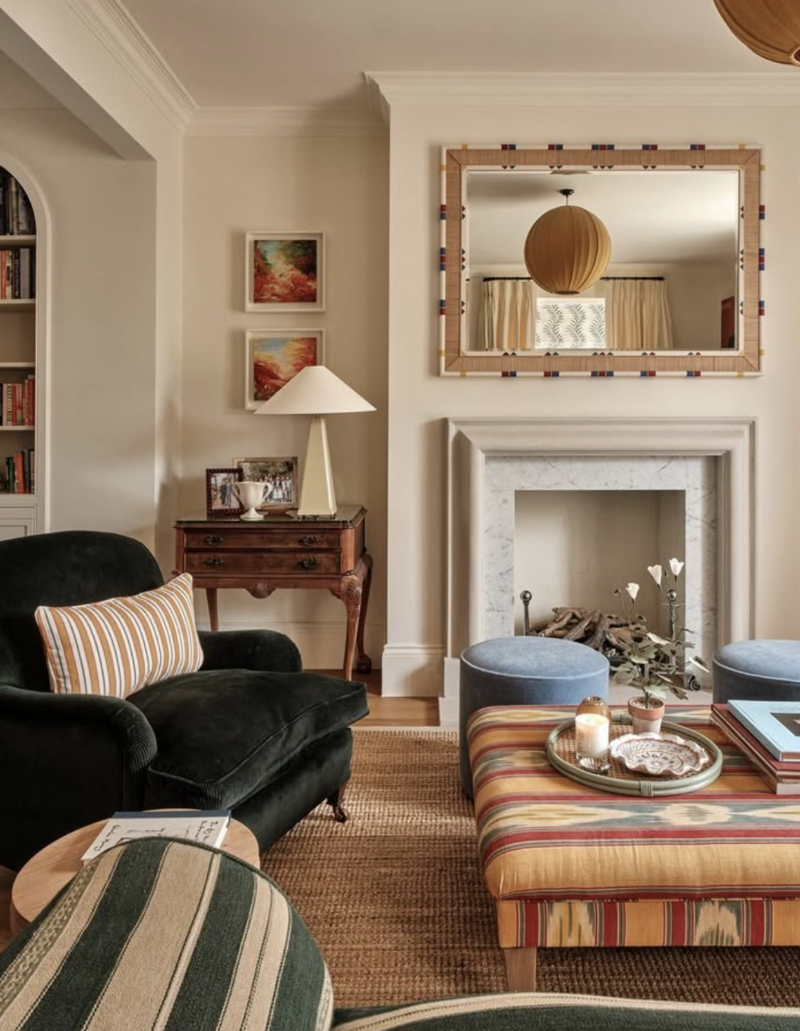If you want to understand what’s going to be big in design this year, peer into the world’s psyche. When the world was scared and isolated during the Covid shutdown, we decorated for comfort. This year, weary and worried after a stretch of inflation and political uncertainty, people are craving growth, playfulness and optimism at home. The places we live must be humble, while paradoxically offering indulgence, with interiors that are honest and down to earth but also manage to put on a show, and keep us entertained.
Among the predictions in VML Intelligence’s “The Future 100: 2025” annual decor trend report….sprawling sectional sofas will yield to tidier seating, classic light switches are being favoured over complex smart home technology.
People want things that are easy to manage. We want fun and are embracing dupe culture phenomenon and design imitations along the way. Luxury garages are taking centre stage as proud car owners elevate them to bespoke showroom standard with luxury parking solutions. Apparently they are called “gallery spaces rather than garages” and there’s a noted shift in material choices.
2025 will be a year of paradoxes, where advanced technology meets digital disconnection, where the prolonged challenges of the “cost-of-living” collide with political turbulence and climate breakdown, and we seek to find that delicate balance between resonance with restraint in the places we live. In addition, it’s time to prepare for new realities—by our own imaginations and by technology that conjures next-level imagined worlds for us to live in. As people are faced with unsettling issues, they are proactively creating a reality that makes sense to them—one that is imaginative and optimistic.
This is a time when anything we imagine can be realized. 2025 is the year of possibilities.
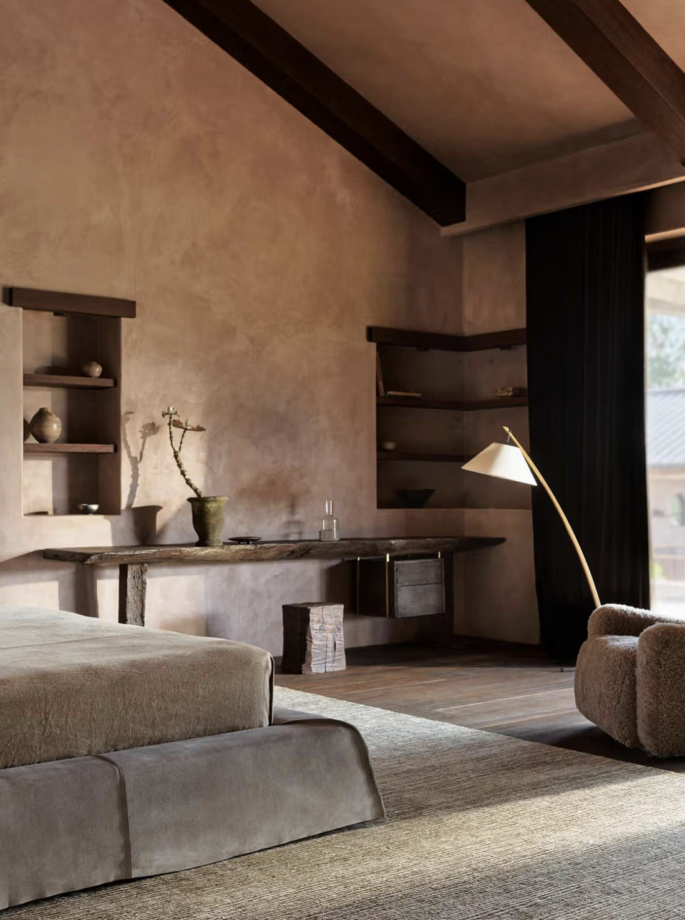
In financially challenging times, the places we live must be humble, while paradoxically offering indulgence. Photo: Armadillo-Co.
Last year, seeking respite from a fast-paced world, people strived to find space to think more purposefully about their lives.
That desire has evolved into a yearning for tactile activities and for finding connection through peaceful solitude. There is a renewed focus on the intuitive self. Get ready for affordable affluence. With increasing workloads and rising costs, homes are an opportunity to integrate self-care.
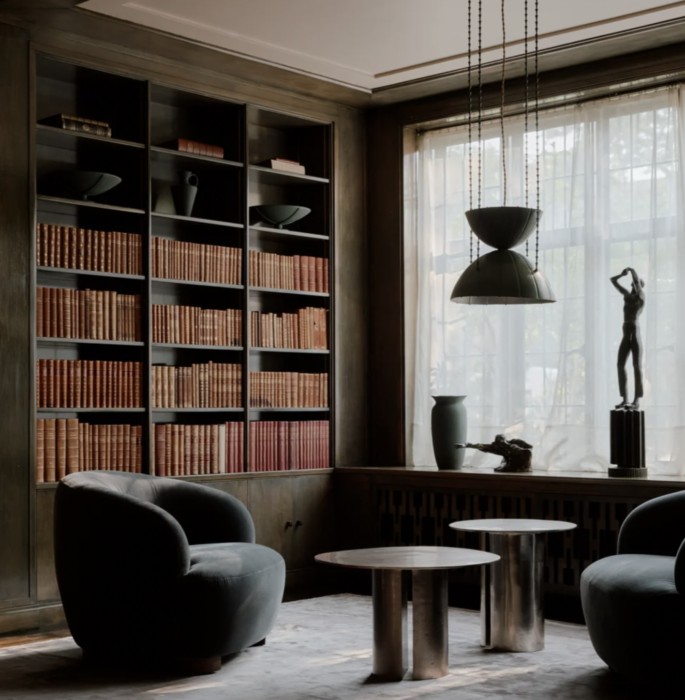
We desire spaces that aim to engage all of the senses. Photo: Eyeswoon.
Against a backdrop of chaos and change, people are keen to connect to their intuitive selves. Most of us are less present these days because of increased technology. We are actively looking to buy or own less stuff as a lifestyle choice. We are prioritising sleep, wanting to spend more time in nature and make time for mindfulness.
The very boundaries of what it means to be human are shifting. We like the idea of a really long and healthy life. That means more than 100 years. Experts believe we have a shot at experiencing better things.
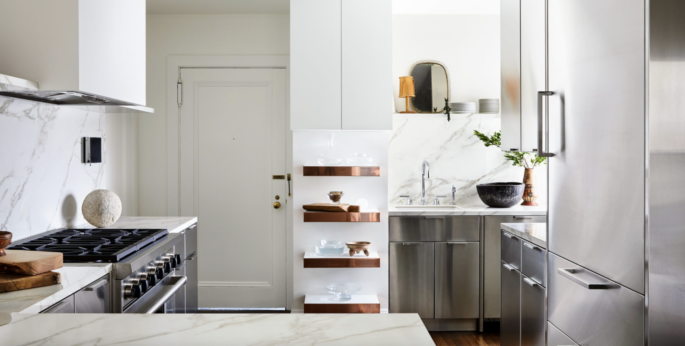
Homes that can offer simplicity and much-needed respite will resonate with people who wish life could be simpler. Photo: Jeremiah Brent.
Join us for a look at 2025’s game-changing trends across the home to keep you future-ready.
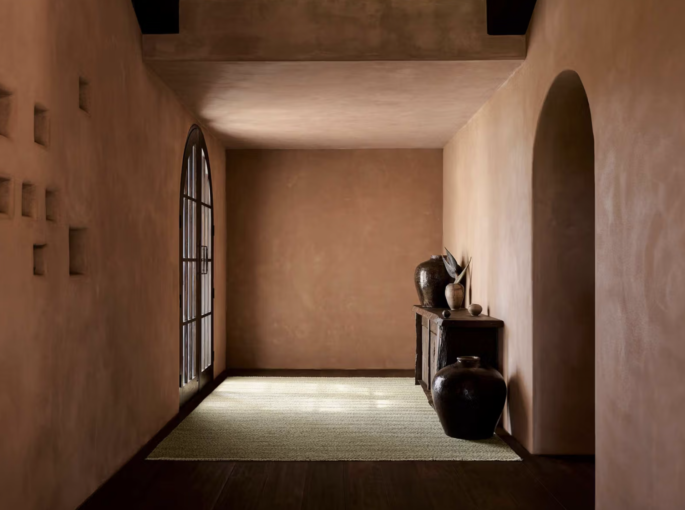
A wave of new neutrals makes headlines as colour specialists rally understated hues that evoke comfort, harmony, and nature. Photo: Armadillo-Co.
Elemental Elegance
A warm, rich, and grounding sentiment drives the year ahead. We’re returning to the natural dyes found in old tapestries, the hues born from gemstones,” said Robin Standefer, of New York’s Roman and Williams in WSJ’s 2025 trend report. Think terracotta, oxidized reds, warm ochres, velvety browns. Particularly popular among the cognoscenti: aubergine, plum and merlot, that evoke comfort, harmony, and nature.
There will be a big shift of warm, homely palettes onto walls. Mocha Mousse, a rich, chocolatey brown, is the Pantone colour of 2025.
Leatrice Eiseman, executive director of the Pantone Colour Institute, says the colour is “underpinned by our desire for everyday pleasures.”

Make way for murals as there is a greater sense of playfulness and a push towards individualism in interiors. Photo: Jeremiah Brent and Nate Berkus Fifth Avenue apartment for Architectural Digest.
Paint company, Benjamin Moore chose Cinnamon Slate, a slick and modern plum-brown, to represent 2025. Why it’s interesting? The mood for 2025 is set around enriching comforts, as well as sophistication and confidence, (that’s the understated luxury speaking up).
Be prepared for a grounding experience that shifts away from maximalist glitz and bright, brash bolds to homey and humbling elegance.
The Analog Movement
In a backlash to the ever-more frantic pace of the digital world, analog pursuits are booming. Many of us are reaching burnout with our constant exposure to screens. We’re fed up of Zoom meetings, emails, and WhatsApp messages, and are craving in-person connection and nature. These are good for our brain and nervous system, as they engage a more mindful flow state where the focus is simply on ‘being,’ rather than a constant state of sympathetic arousal and ‘doing’. Analog activities create a primal sense of comfort and nostalgia. This is influencing the way people design their dwellings with more areas that invite you to digitally unplug, promote relaxation and meaningful connection with others.
To swap screen time for real time, with beautifully curated rooms, ambient music, for enriched self fulfilment, that encourage being drawn to physical formats and pursuits.
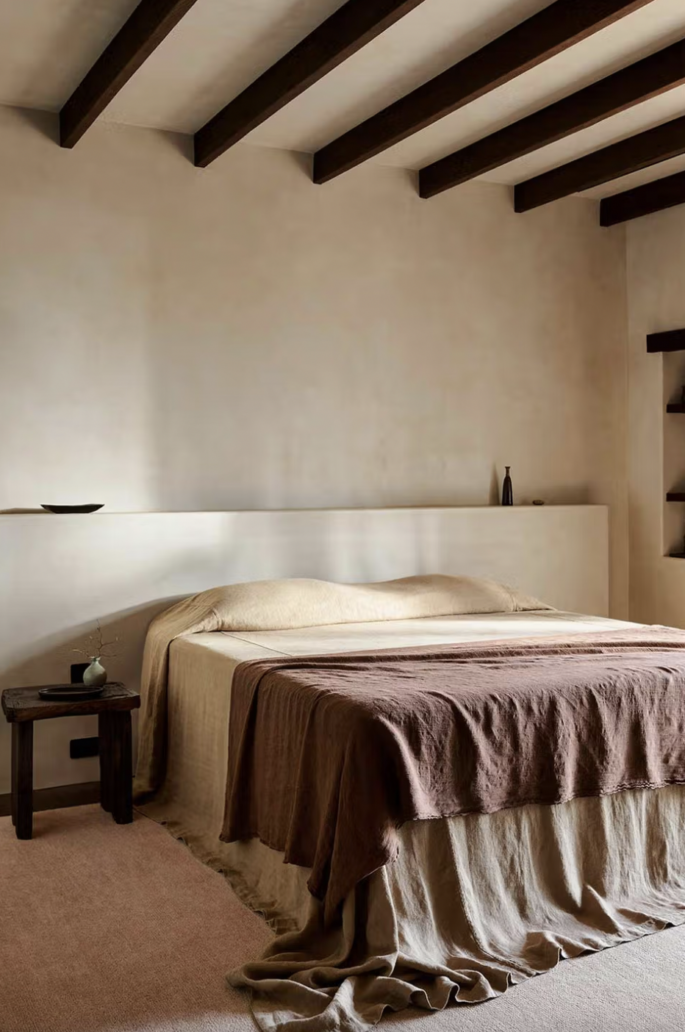
The overload of digital information and technology, means we are seeking surroundings that are about stripping back, simplifying, and allowing much-needed serenity. Photo via Armadillo-Co.
Digital Simplicity
People are overwhelmed by information. Our homes and lives are responding with simplicity. Information overload isn’t new. Shortly after the printing press was invented in 1440, scholars complained about the sudden deluge of material. So it is with digital. People are still feeling the strain of taking too much (but never enough) in. As an antidote, we seek surroundings that are about stripping back, simplifying, and allowing us some much-needed serenity in our living spaces. Otherwise, it’s too easy for every moment of every day to turn into the same kind of semi-distracted time. At its best, however, a home that offers simplicity promises vital forms of agency and freedom with inviting spaces, and autonomy for people to have ownership of their lives.
Homes that can offer simplicity and much-needed respite will resonate with people who wish life could be simpler.
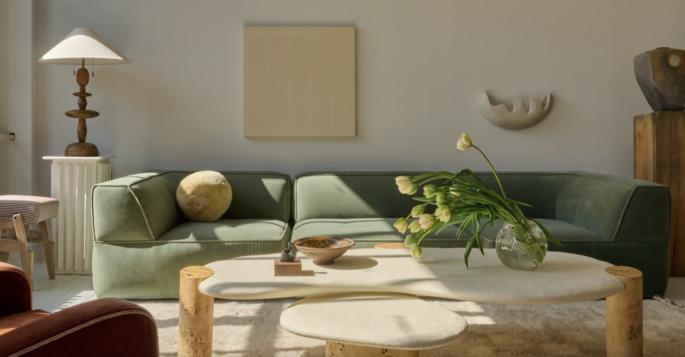
Get ready for affordable affluence. Photo: Eye Swoon
Robot Redux
Make room for humanoid robots—they could soon be a staple in all homes. With a focus on safety, 1X, a robotics company backed by OpenAI, released a video teasing its new humanoid, Neo. Safety is the cornerstone that allows us to confidently introduce Neo Beta into homes, where it will gather essential feedback and demonstrate its capabilities in real-world settings. Humanoid helpers were en masse at the Consumer Electronics Show (CES) 2025, showing off their advanced capabilities. In the future, every house will have a robot.
The Connected Hearth
The home is becoming ever more intuitive, connected, and helpful to people of all ages. A household that could organise itself is a dream that might be nearing reality. Panasonic Well announced Umi at the Consumer Electronics Show 2025—a digital assistant that the company calls a “family wellness platform and coach.” Umi aims to build stronger families by creating healthy habits, bettering communication, simplifying organization, and alleviating the mental load of Chief Household Officers. It will give people greater independence and free time.
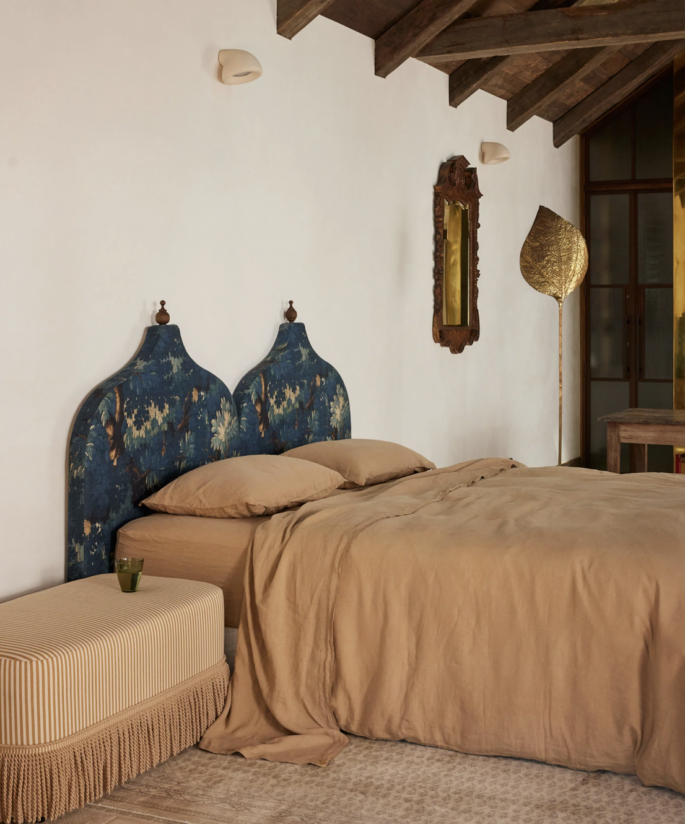
We are prioritising sleep, wanting to spend more time in nature, make time for mindfulness, as well as friends while reducing our screen time. The very boundaries of what it means to be human are shifting. Photo: Cultiver.com
Dumb tech
Designers report people are increasingly rejecting smart home technology. Even things like classic light switches are being favoured over complex systems — people want knobs, not panels. One major reason for this shift is the fear of systems failing or becoming too complex to manage with doors and windows suddenly opening and staying ajar for hours until an engineer could fix the issue.
Reframing Dupes
People are embracing dupe culture phenomenon —and having some fun along the way, giving it a modern, positive, and fun twist. Those willing to embrace the idea of design imitations are also finding opportunities to democratize offerings, giving them positive status among younger generations. Proud Gen Zers seeking a bargain are celebrating brand imitations and fakes, with many saying they often seek out cheaper dupes of designs or products they like. For years, counterfeits have been a thorn in the side of brands, but now some are embracing dupe culture and fueling a new wave of comedic campaigns.
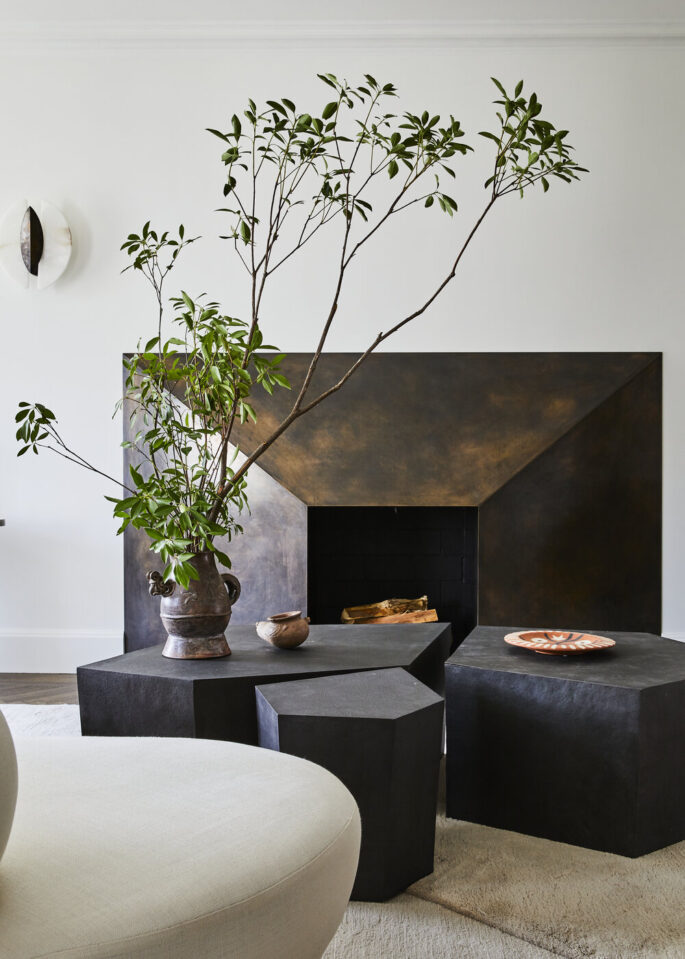
Interior spaces are captivating inhabitants by reducing the noise around them and allowing simplicity to shine. Photo: Jerimah Brent
Homes Showmanship
Homes can’t afford the cost of dull—it’s time to put on a show. Perhaps it’s a rebellion against the infinite reach of algorithmic marketing, or a certain righteous fed-up-ness, but uniqueness itself appears to be having a moment as one of the interior design trends for 2025. Expect more rooms with personality, that tell stories about the people who live in the spaces.
Sensory Storytelling
Our homes must increasingly engage with all the senses offering immersive, memorable experiences to deepend the emotional connection and engagement to each area.
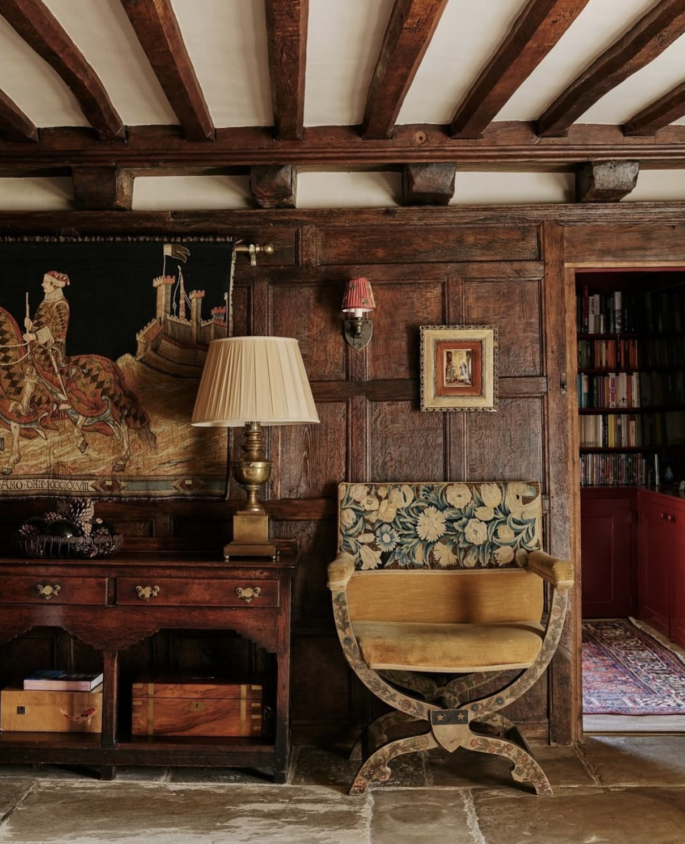
Expect more rooms with personality, that tell stories about the people who live in the spaces. Photo: House & Garden UK.
Humble Interiors
Some of the most successful homes are embracing the everyday while still packing an emotional—and humorous—punch. The trend of elevating life’s more humble daily moments continues to play out, offering a movement toward emotionally relatable, humorous, and humble moments at home that engages with our senses.
Made by Humans
The competition between AI and humans heats up in the battle for creative output. Innovations rarely change the world in the way that we imagine. So it is for AI.
Designers should remember that an AI tool is a way to improve and augment creative design work, rather than carry it out for us.
Undercomsumption
Amid the endless social media hype cycle, the #underconsumptioncore trend is flourishing. This movement espouses—and seeks to normalize— owning less, and using what you have, instead of investing in a continual array of new things.
A growing movement is promoting the virtues of consuming less.
In a September 2024 post that achieved over 521,000 likes as of January 2025, Danish sustainability influencer Gittemarie Johansen discussed how “overconsumption, and influencer culture has helped normalize some pretty messed-up behavior.” She ends by stating “buy less and stop following the influencers [who] romanticize overconsumption.” Whether motivated by finances, sustainability, or sheer overwhelm at consumer culture, a powerful voice on social media is emerging to push back against overconsumption while consumers of all ages are trying to make do with less.
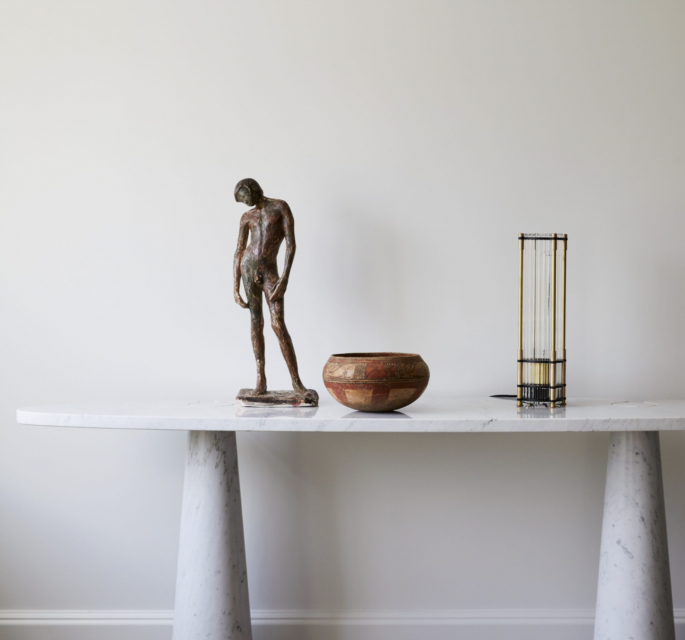
Millennials are all grown up and expect their homes to reflect their new life stages and spending habits, with design that is equal parts functional, convenient, empowering, and fun. Photo: Jerimiah Brent
Imagined Worlds
Abstract, fantastical ideas are reinvigorating design with a sense of transportive wonder. Playful, humorous, and mood-enhancing fantasy for interiors are a form of accessible escapism, and talking points that can be shared with family and friends.
Wellness Should be About Curation and Personalisation
Stepping into otherworldliness (and shifting between space and time) is what people desire. Homeowners are emphasizing “awesperiences”—immersive experiences that inspire a sense of wonder. Textured layering and handcrafted, warm, emotional touches are appearing more. There is more beauty in interiors that are authentic, and in a world of AI, it is nice for homes to feel warm and personal. We hope to see more of that authenticity in 2025—real photos of real people, authentic styling, and a unique, personal perspective.
People are craving sensory and tactile stimulation.
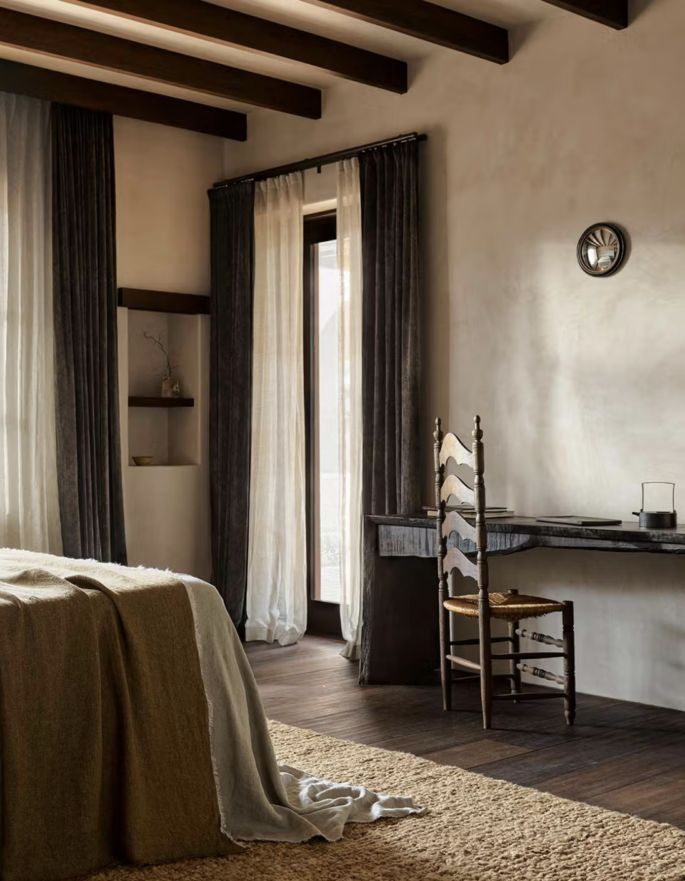
Bedrooms are making dreams worth remembering with next-level sleep experiences. Photo: Armadillo
Prudent Pricing
As purse strings tighten, home owners are diversifying how and where they shop, and designers are responding with creative offers. Shoppers are trading down and opting for cheaper product lines.
Ethereal Interiors
Designers are transporting interiors with mesmerizing minimalist offerings that transcend the ordinary. Interior spaces are captivating inhabitants by reducing the noise around them and allowing simplicity to shine. It’s about stripping away the extraneous and focusing on the silhouette.

“Lean luxury,” or smart luxury that chops out all the frills, is impacting the global luxury industry, as economic challenges compress even affluent budgets. Photo: House & Garden UK.
Dream Bedrooms
Bedrooms are making dreams worth remembering with next-level sleep experiences. Recent research underscores the link between ample sleep quality and longevity, with bedroom design rightfully taking on a wellness bent. Crafting a room that encourages sleep goes beyond the bed, veering toward minimalism, soothing tones that naturally invite relaxation and a more anti-tech or analog approach to the space to encourage better sleep. No televisions and furniture with built-in outlets to streamline cord clutter and integrate technology are on the rise, to help avoid scrolling our screens before bedtime, a sure path to poor sleep. Adding smart lighting is another popular request, that supports circadian rhythms with warmer tones for waking up and winding down.
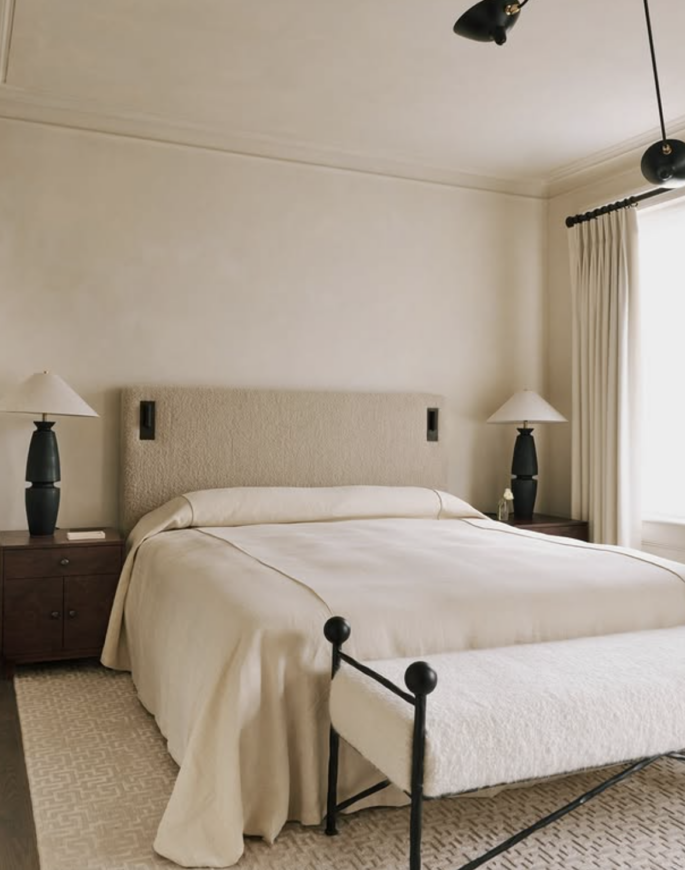
Adding smart lighting is another popular request, that supports circadian rhythms with warmer tones for waking up and winding down. Photo: Banda Property
Automatic blackout curtains are increasingly popular as well as multi-tiered, multi-layered window treatments such as blinds and Roman shades, that allow people to control the amount of daylight unlike using one layer of blackout curtains.
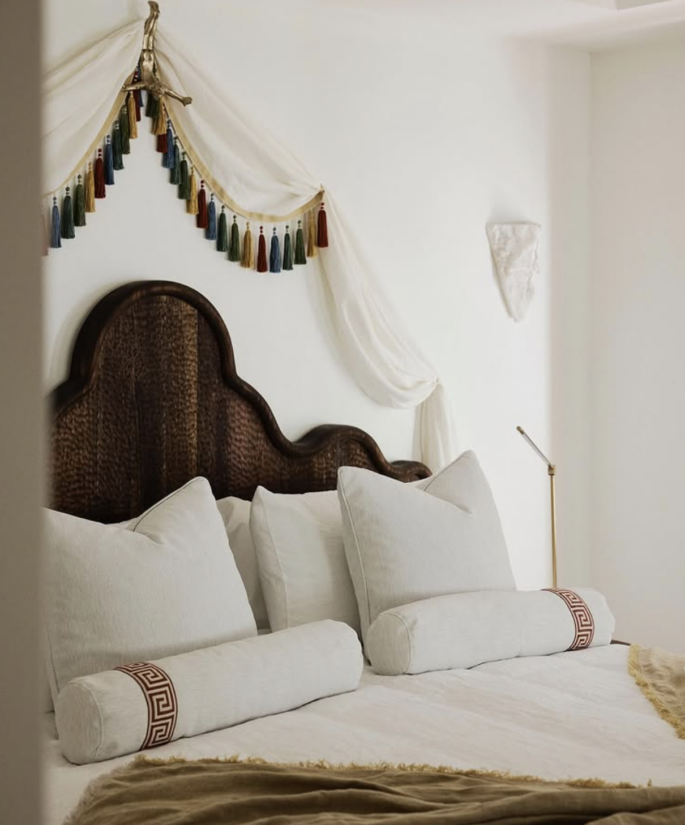
A good night’s sleep goes beyond the bed. Photo: Vogue Living Tamsin Johnson new renovation of Rae’s Wategos
Mid-life Consumerism
Maturing millennials have more spending power than ever before and their exacting tastes are impacting their dwellings. Millennials are all grown up and expect their homes to reflect their new life stages and spending habits, with design that is equal parts functional, convenient, empowering, and fun.
Lean Luxury
“Lean luxury,” or smart luxury that chops out all the frills, is impacting the global luxury industry, as economic challenges compress even affluent budgets. More than a third of consumers are cutting back on spending on themselves, even among those on higher incomes. Gen Z Consumers are increasingly embracing a more relaxed, practical style, moving away from the opulence preferred by previous generations. This generation are focused on self-expression and personal satisfaction. Their purchasing decisions are more thoughtful and centred around cost-effectiveness, emphasizing everyday usability, the experience behind consumption, and the community aspects of their choices—eschewing the display of social status through prominent luxury brand symbols, a hallmark of their parents’.
High-end purchases for our abodes signal a thoughtful, understated, and relaxed approach to luxury.
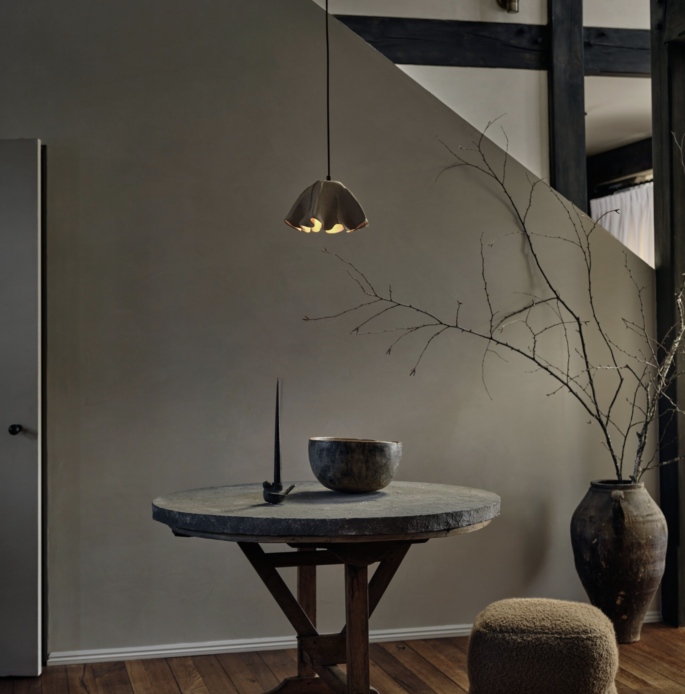
eyeswoon.com.au
Elevated Parking
Luxury garages take centre stage as proud car owners elevate them to bespoke showroom standard with luxury parking solutions. Today’s garages are evolving to accommodate not only expanding car collections but also additional spaces, that can be viewed through a large window. Apparently they are called “gallery spaces rather than garages” and there’s a noted shift in material choices for garages. Resin floors, central turntables, and high-gloss black ceilings designed to reflect the cars below are new features. Today, it’s all about creating dramatic backdrops. Traditional concrete floors have also been replaced by hand-poured resin, available in any colour. This material protects car tires and resists dirt and oil. Recessed lighting integrated into the floors makes the cars look as though they are floating. For high-net-worth individuals, the pursuit is not just high-end luxury, but also personalization and privacy.”
These trends in garage design reflect the growing desire for unique, private, and personalized living spaces.
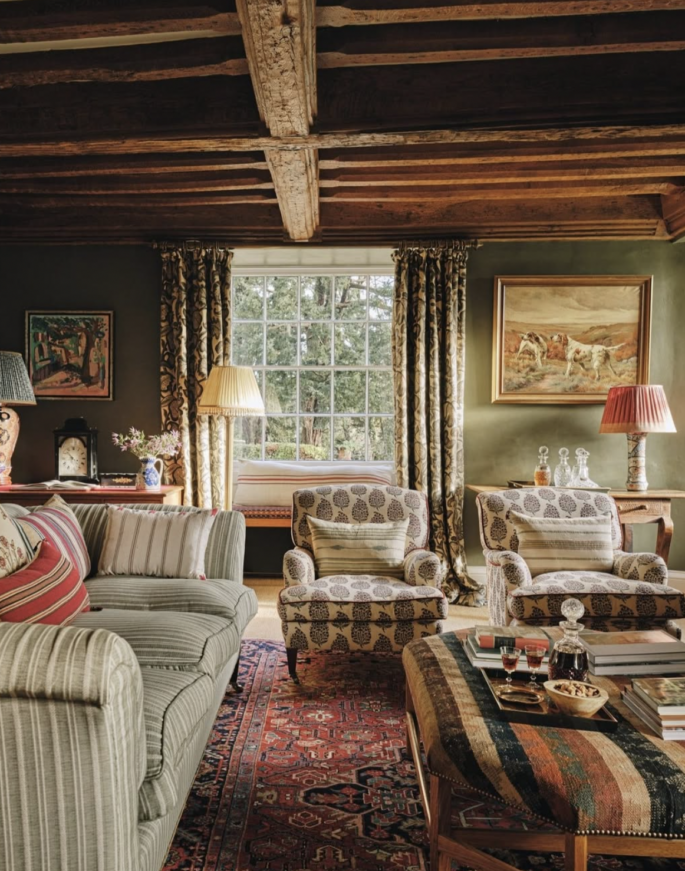
A movement toward truly idiosyncratic, human-centred architecture with a personality of its own aims to elicit a positive and uplifting response. House & Garden UK
Joyful Architecture
The idea of architecture that uplifts is taking hold. Ditching “boring” buildings for emotionally engaging and meaningful ones is a new idea being championed by architectural practices. The chief proponent of this concept is Thomas Heatherwick, creator of the Humanise campaign, which the architect says is about making cities “more joyful and engaging through the design of buildings.”
The campaign is about sensitizing people to the negative impacts of boring buildings on our health and wellbeing, as a lack of visual complexity increases cortisol levels, causing higher levels of stress. A movement toward truly idiosyncratic, human-centred architecture with a personality of its own aims to elicit a positive and uplifting response. People are on a mission to engage their senses and want buildings they visit that spark positive emotions and get their neurotransmitters pumping.

